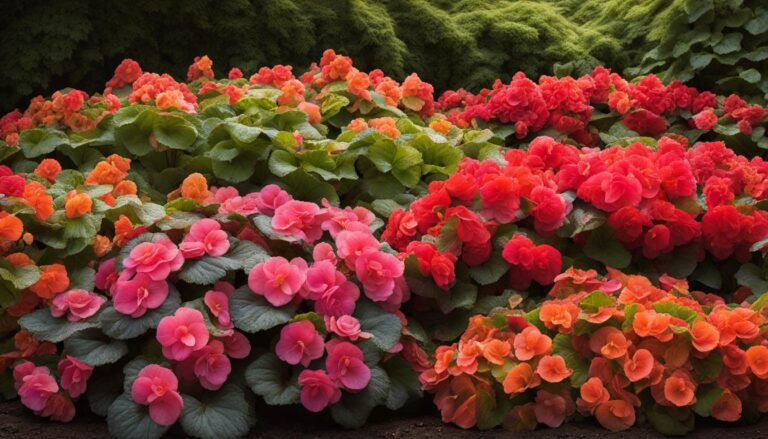
Transform your home into a tropical oasis with the stunning Areca Palm (Dypsis lutescens). This large and beautiful houseplant is not only a feast for the eyes, but it also purifies the air, making it a perfect addition to any indoor space.
Whether you’re a beginner gardener or a seasoned plant lover, the Areca Palm is an ideal choice for its easy care requirements and pet-friendly nature.
Indoor plants have become increasingly popular, and the Areca Palm is undoubtedly one of the best plants for home decoration.
Its lush green fronds and graceful appearance bring a touch of the tropics to any room. Additionally, this plant is known for its air-purifying properties, improving the quality of the air you breathe.
Areca Palms thrive in bright, indirect light, making them perfect for spaces with filtered sunlight or partial shade. As for caring for this tropical beauty, it’s important to keep the soil moist but not waterlogged, allowing the top inch of soil to dry out before thoroughly watering.
With regular pruning to remove dead or yellowing fronds, your Areca Palm will stay healthy and maintain its aesthetic appeal.
Whether you’re a fan of indoor gardening or looking to create a stunning landscape outdoors, the Areca Palm is a versatile choice. Stay tuned as we explore the various aspects of caring for this magnificent plant, including tips for planting and maintenance in both indoor and outdoor settings.
How to Care for an Areca Palm (Dypsis lutescens)
The Areca Palm, also known as Dypsis lutescens, is a stunning indoor plant that can add a touch of tropical beauty to any space. Caring for an Areca Palm is relatively simple, but it requires attention to a few key factors to ensure its optimal growth and health.
Lighting
The Areca Palm thrives in bright, indirect light. It is best to place it in a location with filtered sunlight or partial shade. Avoid direct sunlight as it can scorch the plant’s leaves. If you notice that the leaves are turning brown or crispy, it may be an indication that the plant is receiving too much direct sunlight. Adjust its placement accordingly to provide the right amount of light.
Watering
Proper watering is essential for an Areca Palm. The soil should be kept moist but not waterlogged. It’s recommended to wait until the top inch of soil feels dry before watering thoroughly. Avoid overwatering, as it can lead to root rot and other issues. In dry indoor environments, misting the leaves occasionally can help increase humidity and prevent the tips from turning brown.
Fertilizing and Pruning
Areca Palms benefit from regular fertilization during the growing season. Use a balanced liquid fertilizer and apply it once a month to provide the plant with essential nutrients.
Removing any dead or yellowing fronds by pruning will not only maintain the plant’s aesthetics but also promote its overall health and vitality.
With proper care and attention to lighting, watering, fertilizing, and pruning, your Areca Palm will thrive and bring a touch of the tropics to your indoor space.
Areca Palm Outdoor Care: Tips for Planting and Maintenance
When it comes to incorporating the beauty of Areca Palms (Dypsis lutescens) into your outdoor space, proper planting and maintenance are key. To ensure the optimal growth of your outdoor Areca Palm, it’s important to choose the right location.
Look for an area that offers filtered sunlight or partial shade, protecting the palm from harsh direct sunlight. Cold winds and frost can be detrimental to the palm, so find a spot that offers some shelter.
The soil conditions are crucial for the health of your outdoor Areca Palm. It should be well-draining, allowing excess water to escape and preventing waterlogged roots.
Aim for a slightly acidic soil pH and enrich it with organic matter to provide essential nutrients. Regular watering during the growing season is essential to keep the palm hydrated, but be cautious not to overwater.
In addition to watering, fertilization is important for the optimal growth of your outdoor Areca Palm. Apply a balanced fertilizer during the growing season, following the manufacturer’s instructions. This will provide the necessary nutrients to support the palm’s lush foliage and vibrant appearance.
Maintenance plays a crucial role in keeping your outdoor Areca Palm looking its best. Regular pruning is necessary to remove any dead or yellowing fronds, promoting new growth and maintaining the palm’s health and aesthetics.
Be vigilant for common pests such as spider mites, scale insects, and mealybugs. Regular inspections and appropriate pest control measures will help keep these pests at bay.
To ensure your outdoor Areca Palm thrives and becomes a stunning addition to your garden, follow these tips for planting and maintenance. With proper care, your palm will flourish, adding a touch of tropical elegance to your outdoor space.
FAQ
Is the Areca Palm toxic to pets?
No, the Areca Palm is non-toxic and safe for pets.
Is the Areca Palm a good choice for beginners?
Yes, the Areca Palm is relatively easy to care for and is a great option for beginners.
What kind of light does the Areca Palm need?
The Areca Palm thrives in bright, indirect light, making it ideal for spaces with filtered sunlight or partial shade.
How often should I water my Areca Palm?
Wait until the top inch of soil feels dry before watering thoroughly. Avoid overwatering to prevent waterlogging.
Does the Areca Palm need fertilizer?
Yes, it’s recommended to fertilize the Areca Palm once a month during the growing season with a balanced fertilizer.
How should I prune my Areca Palm?
To maintain the plant’s health and aesthetics, remove any dead or yellowing fronds by pruning.
Can I grow the Areca Palm outdoors?
Yes, the Areca Palm can be grown outdoors as part of landscaping.
Where should I plant my outdoor Areca Palm?
Choose a location with filtered sunlight or partial shade, sheltered from cold winds and frost.
What kind of soil does the outdoor Areca Palm need?
The soil should be well-draining, slightly acidic, and enriched with organic matter.
Should I be concerned about pests and diseases with my outdoor Areca Palm?
Yes, be vigilant for pests like spider mites, scale insects, and mealybugs, as well as signs of diseases like root rot.







2 Comments
Comments are closed.